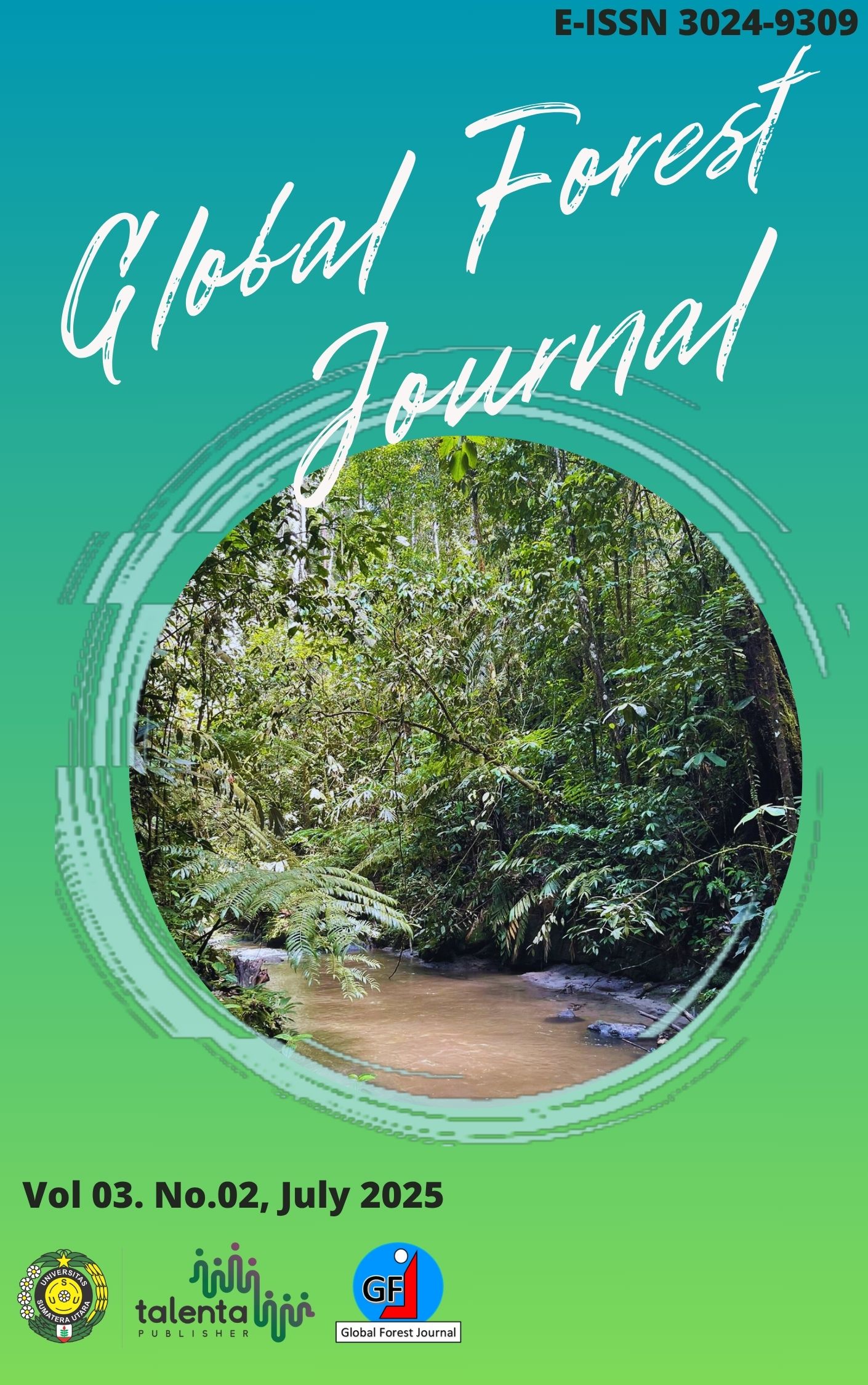The effect of oil heat treatment on the color and the community’s color preferences of two Gigantochloa species
DOI:
https://doi.org/10.32734/gfj.v3i02.21027Keywords:
apus bamboo, Ater Bamboo, Bamboo, Colors, Oil Heat TreatmentAbstract
friendly material. Two local Indonesian bamboo species, namely apus bamboo
(Gigantochloa apus) and ater bamboo (Gigantochloa atter), have been widely
used in various fields but still face challenges such as fading color and low
resistance to moisture. This study aims to investigate the color changes in apus
bamboo and ater bamboo after undergoing heat treatment using oil at varying
temperatures of 160°C, 180°C, 200°C, and 220°C. Five-year-old bamboo samples
were cut into cylindrical shapes with a diameter of 10 cm and a height of 5 cm,
then tested for color before and after the heat treatment. The treatment was carried
out for 2 hours using oil as a medium, then dried in an oven. Color changes were
analyzed using a general colorimeter scanner. Data collection on community
preferences for bamboo colors was conducted by distributing questionnaires. The
red-green chromaticity changes in apus bamboo exhibit a decreasing trend,
whereas ater bamboo shows an increasing trend. The yellow-blue chromaticity
changes in both bamboo species show an increasing trend. For the lightness level,
both bamboos have decreased. The overall color change in apus bamboo and ater
bamboo increases with the increasing temperature. The color preference results
revealed that women prefer bright colors in both bamboo species. Men are more
selective in their color preferences; some choose bright colors, but many also
choose dark colors.
Downloads
Downloads
Published
Issue
Section
License
Copyright (c) 2025 Global Forest Journal

This work is licensed under a Creative Commons Attribution-ShareAlike 4.0 International License.












